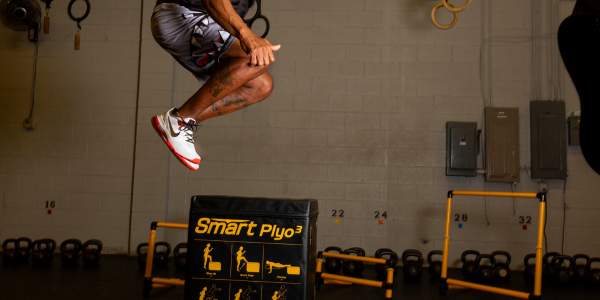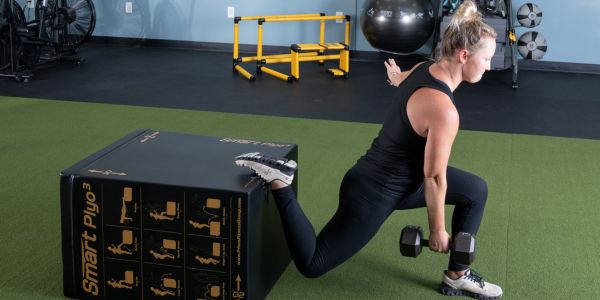It’s easy to make the connection that plyometrics training will help athletes in power sports such as basketball, volleyball, and gymnastics, but is there a reason for everyday fitness enthusiasts to make it a priority?
The short answer is yes. There are numerous benefits to incorporating plyometrics training into your fitness routine, even if you’re not in organized sports. Benefits include increases in agility, coordination, cardiovascular and muscle strength along with improvements in elasticity to connective tissue and spatial awareness.
While generally, the purpose of plyometrics is to improve explosive power (great for athletes), it can also result in the kind of nimble body that moves easier through everyday life.
Getting Started
For best results (and fewer injuries), a solid fitness base should be squared away before adding an intense jumping session.
Get strong
The strength of your posterior chain muscles in the back of your body (glutes, hamstrings, and lower back) has a big influence on your power and movement. Squats, lunges, and deadlifts are great exercises to build leg strength. You’ll also want to work on having a strong, active core to have the ability to control the action pattern of the plyometric moves.
Mobility Matters
Your connective tissue supports, strengthens, and cushions the components of your moving body. Connective tissue adapts to training just like your muscle, but you need to be patient because it adapts at a slower pace. If your muscle development outpaces your connective tissue adaptation, you could end up with an injury. Having good joint mobility will create more efficient power, translating into safer, full range plyometric movements. To prepare for jumping, you’ll want to have excellent mobility of your ankles, shoulders, and hips.
Starter Plyo Moves
Start by building plyometric work gradually into your fitness routine as it will give you the best results. Lower jumps with higher reps will help you build ankle strength and allow you to learn how to land correctly. Be sure to use your feet to absorb the landing, which will ease the pressure on your joints and protect your knees. Beginners should start with progressive modifications to help them build toward full moves. Keep in mind, though, form matters. Always.
Try these:
- Skipping
- Broad Jumps
- Skater Jumps
- Jump Rope
Add Box Jumps to your Training
Your first few sessions with a box jump should be about getting familiar with the body mechanics it takes to move your body from ground to standing on the box. Start low, and step into the first moves. When you’re ready, try a box jump.
BOX JUMP STEP 1
Begin in a deep squat position with a step or sturdy platform or box in front and arms bent next to the body’s sides.
BOX JUMP STEP 2
Swing the arms and jumping as high as possible, landing quietly and controlling in a squat position on the step. Both feet should land at the same time, and weight should stay in the heels.
OUR SMART Soft PLYO CUBE, 3-in-1 is excellent for box jump training
OUR SMART Soft PLYO CUBE, 3-in-1 is an excellent training tool for box jumps. If you’ve ever scraped up your shins doing box jumps on a hard surface product, you will appreciate the difference the SMART Soft Plyo Cube makes! Plus, the 3 in 1 height option makes for great variability in exercises.







